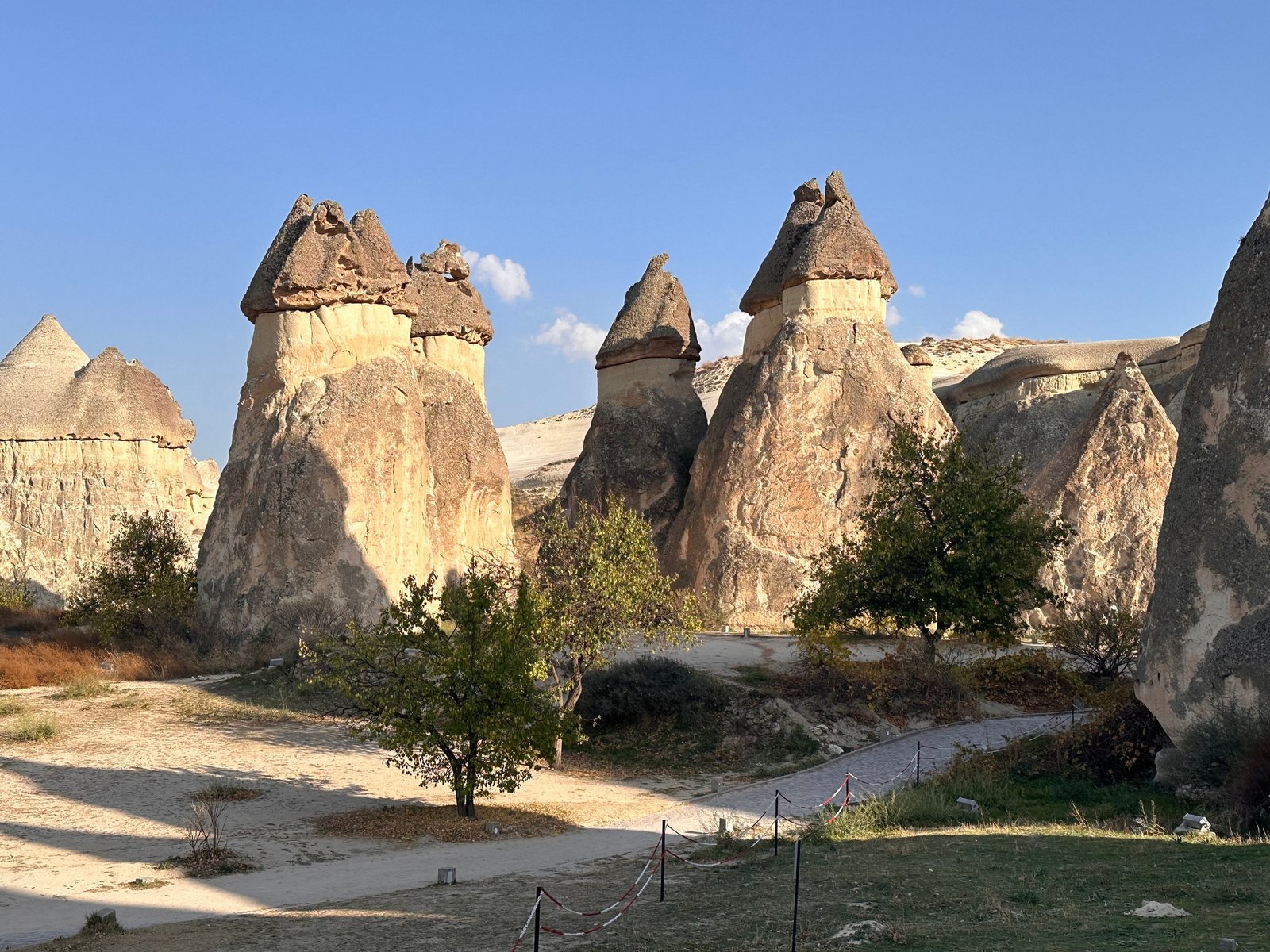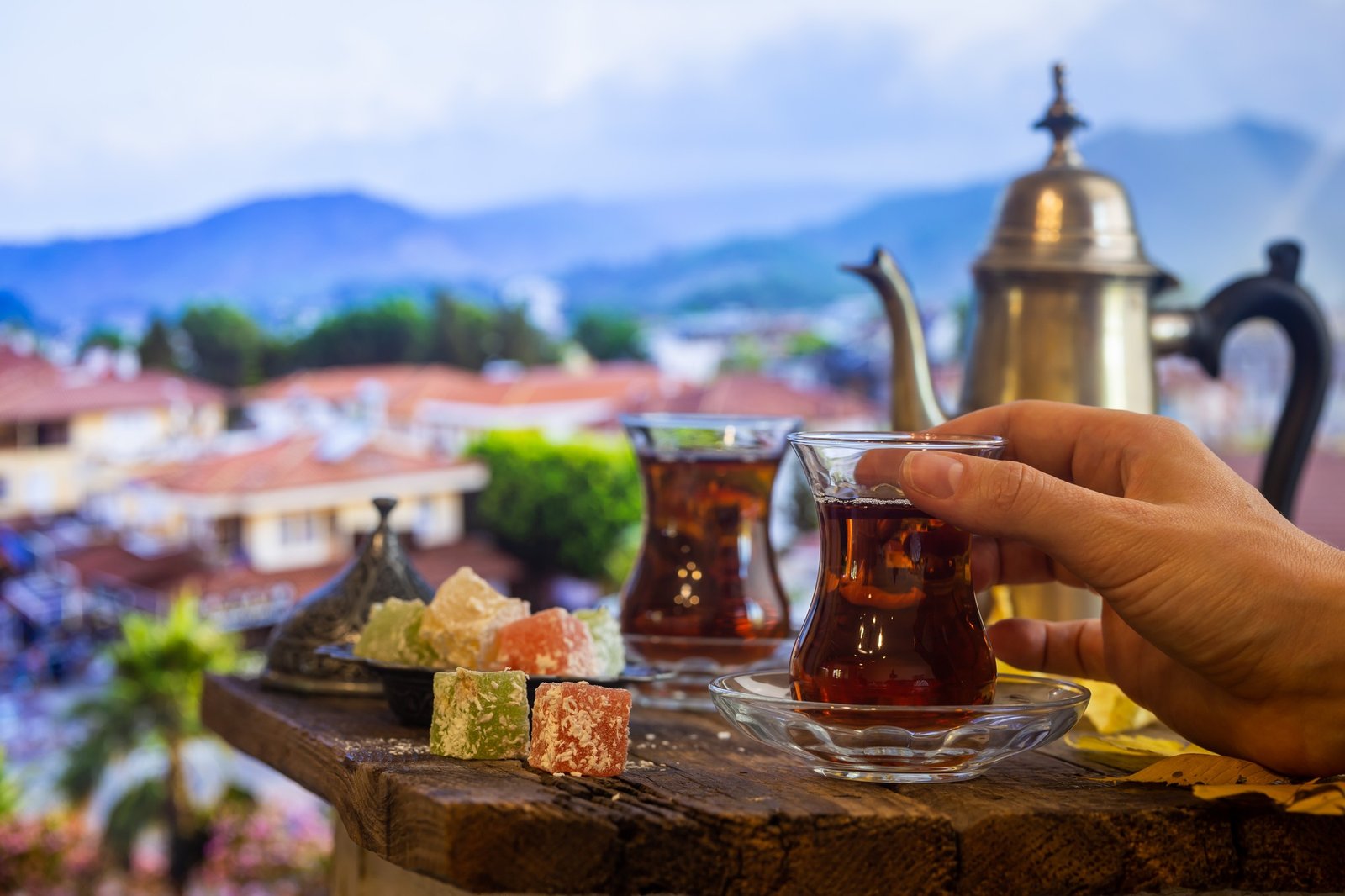Situated in the heart of Turkey’s mystical Cappadocia, the Monks Valley stands as an unforgettable destination for travelers seeking a blend of history, myth, and stunning natural landscapes. With its iconic fairy chimneys, rich cultural legacy, and serene atmosphere, Monks Valley is a treasure trove for travel bloggers, enthusiasts, and curious history buffs alike. Whether you’re exploring Cappadocia for the first time or looking to uncover its lesser-known stories, a visit to the Monks Valley promises an experience that will captivate your imagination.
This blog dives into Monks Valley’s history and myths while uncovering its breathtaking views—showcasing why this stunning location is a must-see for every Cappadocia travel itinerary.
Discovering the Monks Valley in Cappadocia
Monks Valley, or “Paşabağ” as the locals call it, holds a special place in Cappadocia’s cultural and geological history. This unique landscape, famous for its distinctive rock formations, fairy chimneys, and tranquil setting, has enchanted travelers and inspired awe for centuries.
But what exactly makes the Monks Valley so unique? The answer lies in its blend of ethereal beauty and deep historical significance.
A Landscape Sculpted by Nature
Cappadocia is internationally renowned for its enchanting “fairy chimneys”—tall, cone-shaped rock formations created over millions of years by volcanic eruptions and erosion caused by wind and rain. The fairy chimneys in Monks Valley are some of the most iconic and well-preserved examples of these natural wonders.
This region’s geography is a gift to photography enthusiasts. Picture pastel-hued skies at sunrise, casting a warm glow over these otherworldly formations. Whether you’re a seasoned travel blogger or simply someone who loves capturing magical moments, the Monks Valley ensures postcard-worthy shots at every turn.
A Monastic Heritage
The Monks Valley wasn’t just shaped by nature; it was also shaped by faith. This area was once home to Christian monks, who sought refuge in the rock formations during the Byzantine era. The monks carved chapels, homes, and corridors into the stone, creating a peaceful haven for prayer, meditation, and protection from invasions.
The valley’s name reflects this sacred history—the monks left behind an enduring legacy that you can witness today. Fascinating remnants of their lives, including small rock-carved chapels and hermitages, can still be explored, offering glimpses into their austere yet tranquil lifestyles.
Myths and Mysteries of Monks Valley
Myths and folklore are deeply interwoven with Cappadocia’s identity, and the Monks Valley is no exception. Locals believe that the fairy chimneys were homes to fairies and spirits that protected the land. Whether or not you believe these stories, there’s no denying the valley’s mystical aura—it’s an easy place to lose yourself in daydreams and legends.
It’s also rumored that the monks who resided here chose this location because the fairy chimneys offered a secluded, almost otherworldly atmosphere conducive to connecting with the divine. Wander through the valley, and you might just feel the blend of mythology and spirituality the monks themselves once experienced.
What to See in and Around Monks Valley
1. Fairy Chimneys Up Close
Monks Valley offers some of the best-preserved fairy chimneys in all of Cappadocia. Meander through the valley to see the fascinating formations up close—each one seems more surreal than the last.
2. St. Simeon’s Hermitage
One of the most intriguing stops in the valley is St. Simeon’s cell, a hermitage carved into the rock where the famous monk lived and prayed. This gives visitors a direct connection to the spiritual history of the site.
3. A Hike Like No Other
Monks Valley’s trails are gentle enough for all skill levels, making it an ideal hiking destination. Follow these trails for varying perspectives of the valley’s rock formations, all while surrounded by the serene beauty of Cappadocia’s landscape.
4. Sunset Views
For a truly unforgettable experience, visit Monks Valley during sunset. The interplay of the golden hour light with the deep shadows of the chimneys is pure magic. It’s a sight that encapsulates the essence of Cappadocia.
Visiting Monks Valley: Tips for Travelers
- When to Go: The best time to visit Cappadocia is in spring (April to June) or autumn (September to November). The weather during these seasons is mild, making it perfect for exploring.
- What to Wear: Comfortable walking shoes and sun protection are a must! The rocky terrain can be uneven, and the sun can be strong during peak hours.
- Photography Advice: Early mornings and late afternoons are ideal for capturing Monks Valley in the best light. Try experimenting with wide-angle shots to capture the grandeur of the formations.
- Guided Tours: To fully appreciate the valley’s deep history and cultural significance, consider booking a guided tour with a knowledgeable local guide.
Beyond the Monks Valley
While Monks Valley is a must-visit, no trip to Cappadocia is complete without looking beyond its boundaries. Combine your visit with other iconic experiences like hot air balloon rides over Göreme, exploring the underground cities of Derinkuyu, or marveling at the ancient rock churches of the Ihlara Valley.
Each destination offers a unique perspective on Cappadocia’s rich tapestry of history, myths, and breathtaking sights, ensuring your trip is as diversified as it is unforgettable.
Your Perfect Cappadocia Travel Itinerary Includes Monks Valley
Monks Valley in Cappadocia isn’t just a location—it’s an experience. The valley’s unmatched rock formations, monastic history, and mythical charm make it one of the most captivating spots in Turkey.
Whether you’re a travel enthusiast eager to explore natural wonders, a history buff hunting for a glimpse into the past, or a photographer chasing magical landscapes, the Monks Valley will exceed your expectations.
Cappadocia is calling—answer it by starting your adventure at the heart of its natural and cultural heritage. Begin planning your visit today, and make the Monks Valley the crowning jewel of your Cappadocia travel experience.


